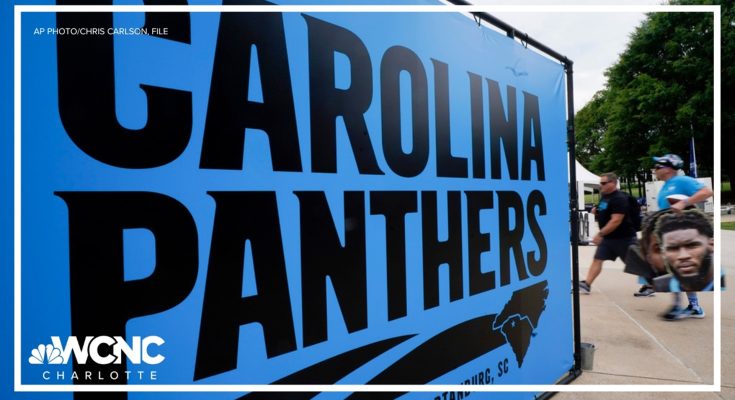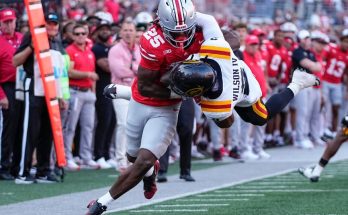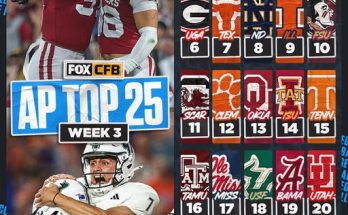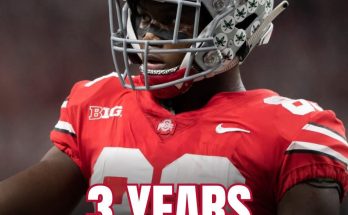The city of Charlotte is buzzing with excitement as the Carolina Panthers announce the long-awaited return of a cherished tradition that hasn’t graced Bank of America Stadium since 2023. For the first time in two years, the team is bringing back a fan-favorite event that not only strengthens the bond between the franchise and its loyal supporters but also redefines what community engagement looks like in professional sports. This return marks more than just the resumption of a beloved tradition—it represents a rekindling of identity, unity, and culture in the heart of Panthers Nation.
For those unfamiliar with what this event means to the city and to the broader Panthers fanbase, it’s essential to understand its origins. Before its hiatus, the event served as a hallmark moment in the preseason buildup, bringing thousands of fans together to interact with the players, coaching staff, and the organization as a whole in a setting that went far beyond the usual game-day environment. It wasn’t just about football; it was about food trucks, music, fireworks, interactive games for kids, autograph sessions, and open practices that turned Bank of America Stadium into a festival of sports and civic pride.
In a league where corporate partnerships, media rights, and commercial pursuits often dominate headlines, these moments of direct community connection are increasingly rare—and increasingly valuable. When the Panthers originally introduced the fan event years ago, it instantly became a highlight of the summer calendar in Charlotte. Families, longtime supporters, and even casual fans flocked to it as an annual ritual. However, logistical challenges, changes in the coaching regime, COVID-19 policies, and fluctuating team performance eventually led to its discontinuation in 2023. Its absence left a void—not just on the calendar but in the emotional rhythm of being a Panthers fan.
The decision to bring the event back in 2025 has been met with widespread praise across fan forums, social media, and local media outlets. This renewed focus on community-first initiatives is a calculated move by the Panthers’ front office, now under the direction of a revitalized leadership team. Under the stewardship of owner David Tepper and head coach Dave Canales, the Panthers appear to be making a concerted effort to return to their roots—emphasizing values like accessibility, transparency, and genuine fan involvement. In many ways, this move isn’t just about nostalgia; it’s about reestablishing trust with the fanbase after several turbulent seasons both on and off the field.
Part of the appeal of the event is that it blurs the line between players and fans. Where most NFL interactions happen through screens or from high-priced seats, this event places the team quite literally on the same level as its supporters. When a kid gets to throw a pass with the starting quarterback or a teenager snaps a selfie with a Pro Bowl lineman, it creates memories that often translate into lifelong loyalty. These aren’t empty gestures; they’re emotional investments that pay dividends in brand equity, ticket sales, and multi-generational fandom.
But the Panthers’ motivations go deeper than short-term PR wins. This year’s version of the event is expected to have a broader focus, incorporating local small businesses, charities, and civic leaders. In an era when sports franchises are increasingly being scrutinized for their economic and social roles in their communities, the Panthers are signaling that they want to be seen not just as a football team, but as an institution embedded in the social fabric of the Carolinas.
There are also strategic implications. The Panthers are in a unique stage of rebuilding—both from a competitive standpoint and an organizational identity perspective. After a string of disappointing seasons and rotating head coaches, 2025 offers a fresh slate. With a promising young quarterback in Bryce Young, a hungry defense, and a coaching staff that finally seems stable and aligned, the return of this fan-favorite event is part of a broader effort to energize the base. It’s easier to sell optimism when it’s packaged with barbecue, live music, and high-fives from star athletes.
The revival also coincides with a broader renaissance in NFL fan engagement. Across the league, teams are realizing the value of in-person, grassroots connections at a time when digital interactions dominate most other aspects of fandom. While fantasy football, social media, and streaming platforms have brought fans closer to the game in some ways, they’ve also made the experience more impersonal. Events like the one returning to Charlotte serve as a powerful counterbalance—a reminder that football at its best is deeply communal.
The timing of the announcement couldn’t be more fortuitous. With training camp just around the corner, the Panthers are looking to build momentum not only on the field but in the hearts of fans. The return of this event provides a jolt of energy and optimism at a moment when it’s sorely needed. After years of underperformance and fan frustration, there’s a palpable desire in Charlotte to rally around something hopeful. This event gives people a reason to believe again—not necessarily in a Super Bowl run, but in the idea that being a Panthers fan is worth it.
One of the most anticipated elements of the event is the open practice at Bank of America Stadium. For many fans, especially younger ones, seeing players in action up close is an experience unlike any other. The sound of pads colliding, the sight of elite athleticism just feet away, and the rhythm of a professional practice are educational as much as they are entertaining. It’s football in its rawest form, stripped of the commercial gloss, and presented as a living, breathing craft.
The team is also planning to include panel discussions with coaches and front-office personnel, allowing fans to ask questions and hear directly from decision-makers. This kind of transparency has been sorely lacking in recent years, and it’s encouraging to see the organization making strides toward more open dialogue. It’s not just about giving fans access—it’s about giving them a voice.
Equally important is the economic impact of the event. Local vendors, artists, and food trucks will be featured prominently, turning the stadium concourses into a showcase for the city’s culinary and cultural vibrancy. In a time when inflation and economic uncertainty are on everyone’s minds, giving local entrepreneurs a platform to shine is both savvy and socially responsible. The Panthers understand that their success is tied to the well-being of the community around them.
Another thoughtful addition is the “Legends Corner,” where past Panthers stars will be available for meet-and-greets and storytelling sessions. For a relatively young franchise, building a sense of history and legacy is crucial. By spotlighting players who helped define the team in its early days—like Steve Smith Sr., Julius Peppers, or Jake Delhomme—the organization is honoring its roots while bridging the generational gap among fans.
Security, inclusivity, and accessibility are also being prioritized. Special zones for differently-abled fans, sensory-friendly areas for children with autism, and multiple bilingual stations are part of the updated blueprint. These aren’t just box-checking exercises—they’re part of a genuine effort to ensure that all fans feel seen, heard, and welcomed. It’s a reflection of the evolving understanding that sports teams must serve the entirety of their community, not just the most visible or affluent segments.
While the event is a clear win from a community and PR perspective, it’s also a litmus test. Fans will be watching closely to see if the energy, enthusiasm, and promises of the day carry over into the regular season. Engagement is only meaningful if it translates into a deeper connection over time. For the Panthers, this is a chance to show that they’re serious about change—not just on the field but in the way they operate as an organization.
The return of the event also sends a message to other franchises. In a league known for its intense competition and innovation, the Panthers are proving that you don’t have to choose between winning and caring. In fact, the two are often connected. A team that feels loved and supported by its city is more likely to play with pride. A fanbase that feels listened to is more likely to stay loyal in lean years. Culture matters, and moments like these are the building blocks.
Ultimately, the reintroduction of this event isn’t just about one day of fun—it’s about setting a tone for the season, the franchise, and the future. It’s a stake in the ground saying, “We hear you. We see you. We’re still in this together.” In a time when professional sports can feel increasingly corporate and distant, the Panthers are taking a stand for something simpler and more profound: connection.
Charlotte is ready. Panthers fans are ready. And from all signs, the team is too. As the gates of Bank of America Stadium swing open once again to welcome families, friends, and fans from all walks of life, it’s clear that this is more than a return—it’s a revival. It’s a moment to remember why we fall in love with sports in the first place: not just for the touchdowns and trophies, but for the memories, the shared stories, and the deep, abiding sense of belonging.
So when that first whistle blows, when that first high-five is exchanged, and when the fireworks light up the Charlotte skyline, it won’t just signal the start of an event. It will mark the rebirth of a tradition, the reawakening of a fanbase, and the renewed promise that, win or lose, this team is ours—and we are theirs.



